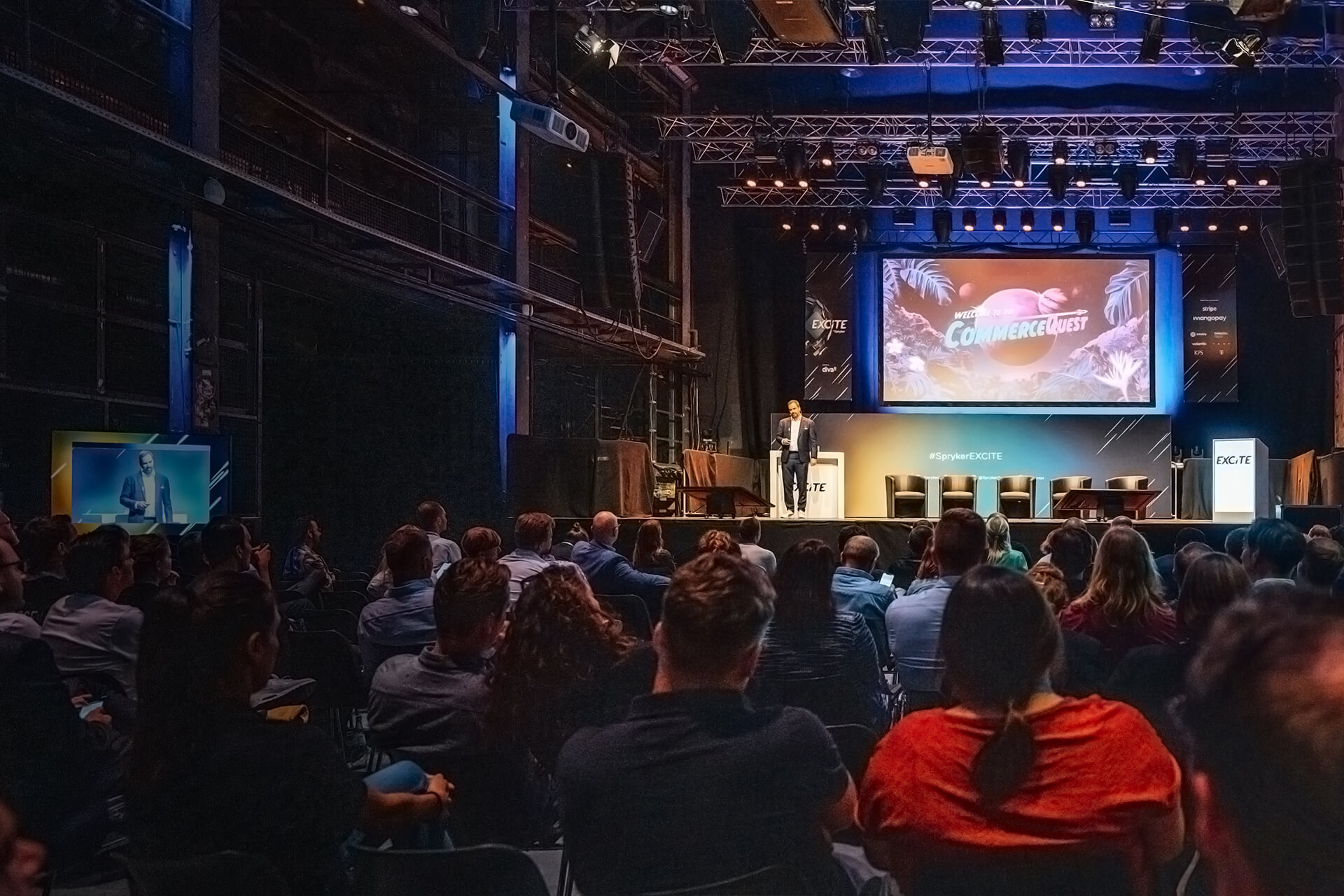Spryker EXCITE
How CIOs Can Prepare for Continued Uncertainty
The role of the CIO has changed forever. No longer guardians of infrastructure, today’s technology leaders are architects of transformation, tasked with steering their organizations through relentless change. From composability to AI readiness, these five strategic imperatives will help CIOs lead with clarity, speed, and resilience in a volatile world.


In a world where disruption is no longer episodic but perpetual, the role of the CIO has fundamentally shifted. Technology leaders are no longer stewards of systems. They are architects of agility, resilience, and transformation. Economic volatility, regulatory shifts, supply chain instability, and AI acceleration are colliding to form an operating environment defined by change. In this reality, traditional models of IT governance, infrastructure planning, and platform delivery fall short.
The CIO’s mandate today is not simply to deliver on business requirements. It’s to lead the organization through uncertainty with clarity and conviction. That means designing systems that can flex, decisions that can adapt, and organizations that can scale without falling into chaos.
At Spryker, we’ve seen firsthand that the most resilient digital commerce strategies aren’t the ones that aim for maximum control. They’re the ones designing systems with flexibility as a core requirement, not a byproduct. In today’s environment, composability, agility, and resilience aren’t aspirational terms. They’re practical responses to the fact that what worked yesterday may no longer work tomorrow.
So how can CIOs prepare for what’s next? Here are five strategic considerations to guide your approach.
Build for Change, Not for Control
Legacy platforms were built for predictability. But in today’s dynamic landscape, stability is no longer the end goal. It’s speed, adaptability, and optionality that separate future-ready companies from those stuck maintaining the past.
Composable architectures, those that are API-first, modular, and cloud-native, enable businesses to respond in real time to market shifts, customer demands, and regulatory change. Whether it’s launching a new product line, adding AI-based personalization, or reconfiguring fulfillment logic to support nearshoring, companies with composable infrastructure can act without disrupting their core.
CIOs should champion technology environments that support iteration, not inertia. The priority isn’t to prevent change. It’s to make change safe, fast, and scalable.
Make Operational Agility the Center of Your Technology Strategy
Much of what gets labeled as “digital transformation” fails not because of flawed vision, but because of misaligned execution. When IT, product, and business teams aren’t aligned, and when routine platform changes take months to implement, agility breaks down at the operational level.
Real agility is the ability to translate urgency into action. That means shared KPIs, streamlined decision-making, and architecture that supports rapid experimentation. CIOs must model a culture of empowered execution, where cross-functional teams are given the tools, autonomy, and guardrails to test, learn, and scale at speed.
The shift here is subtle but profound: from managing roadmaps to enabling velocity.
Rethink Risk in a Volatile World
In volatile conditions, trying to eliminate risk is not only futile, but risky in itself. CIOs must move away from a default posture of risk aversion and toward risk calibration: evaluating initiatives based on their opportunity potential, organizational readiness, and cost of disruption.
Not every idea deserves immediate execution. But the ones that score high on strategic upside and low on disruption cost? Those are the moves that must be made, and made fast. Self-service portals, AI-powered personalization. These aren’t moonshots; they’re controlled bets that offer measurable ROI with limited complexity.
The CIO’s job isn’t to greenlight everything or shut it all down. It’s to understand where the business can move fast without flying blind, and then clear the runway.
Ensure AI Projects Start with Infrastructure, Not Algorithms
AI has rightly earned a central place in every CIO’s agenda. But many leaders still overestimate the power of the tool and underestimate the importance of the foundation. According to Gartner, 85% of all AI models/projects fail because of poor data quality or little to no relevant data.
Without unified data, clear governance, and flexible architecture, even the best models can’t deliver value.
The shift from AI experiments to AI ecosystems requires systems that can orchestrate real-time signals, plug into core workflows, and evolve with minimal retraining. It starts with getting the basics right: making data accessible, reducing dependencies in your architecture, designing modular systems, and setting up infrastructure that supports reuse. These aren’t optional steps. They’re the foundation for using AI effectively at scale.
And while the use cases in B2B commerce are clear, from dynamic pricing and intelligent bundling to AI-powered demand forecasting, success won’t come simply from buying the latest AI tools. It will come from being ready to use them effectively.
Don’t Automate Away Your Human Edge
As AI systems take on more ‘cognitive’ work, CIOs must also anticipate a quieter risk: the erosion of human skill. Automation may reduce errors and increase efficiency, but it also shifts the boundary of human expertise. Over time, critical capabilities like strategic judgment, negotiation, and creative problem-solving can atrophy if they’re not continuously developed.
Gartner insights show that the majority of leaders view talent and skill scarcity as a growing crisis: 78% of CEOs report talent scarcity as a top concern, 57% of HR leaders say skills gaps are impairing performance, and 82% of CIOs see skills shortages undermining key objectives. Adaptive learning systems, AI-guided onboarding, and embedded enablement tools can ensure that as machines grow smarter, people do too.
Because the organizations that thrive in an AI-powered world will not be the most automated. They’ll be the most intelligently balanced, where human ingenuity and machine intelligence co-evolve.
Leading Through the Unknown
There’s no playbook for what comes next. That’s exactly why CIOs must lead by building systems and teams that can adapt to whatever comes next.
Success in this era will not be defined by those with the most systems, but by those with the right ones: modular, agile, intelligent, and human-centric. At Spryker, we believe composability is more than a tech choice. It’s an organizational mindset. One that gives leaders the confidence to act fast, pivot smartly, and scale sustainably, even when the road ahead is unclear.
The businesses that will win tomorrow are already building today for what they can’t yet predict. And the CIO is at the center of that future.
